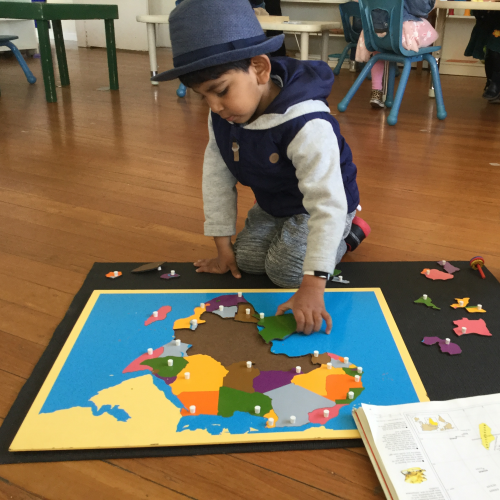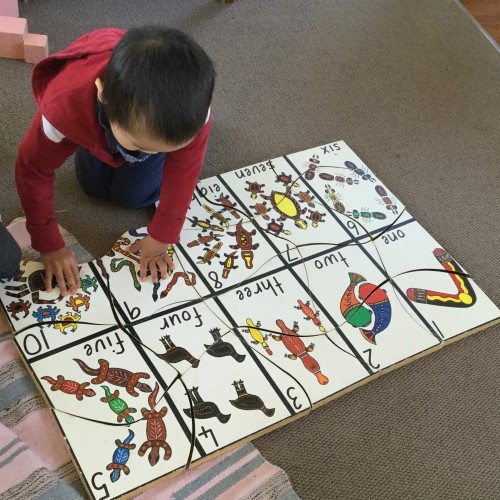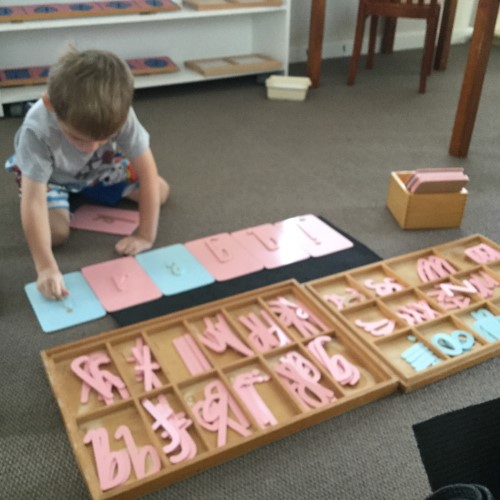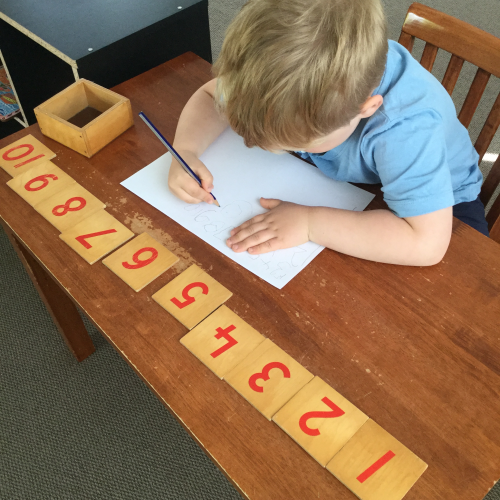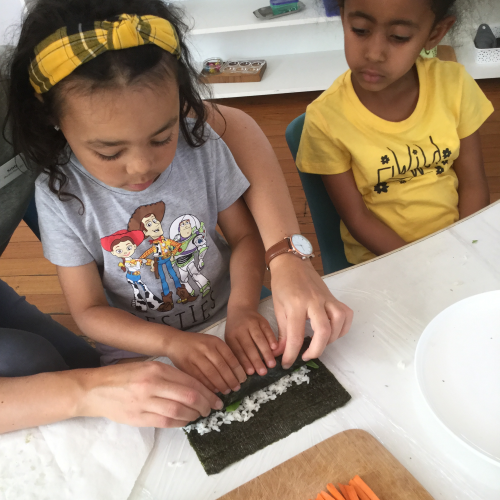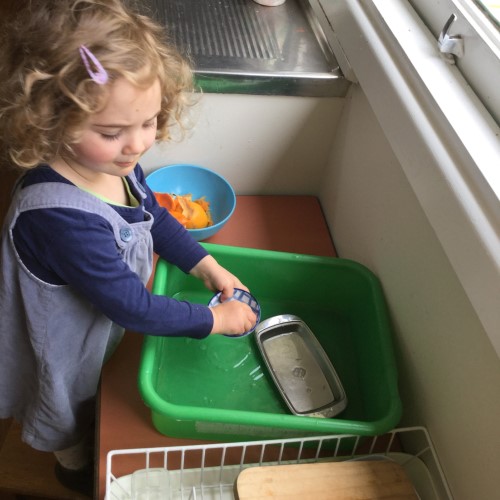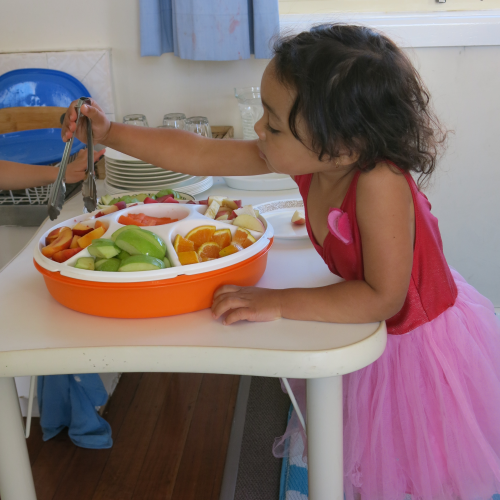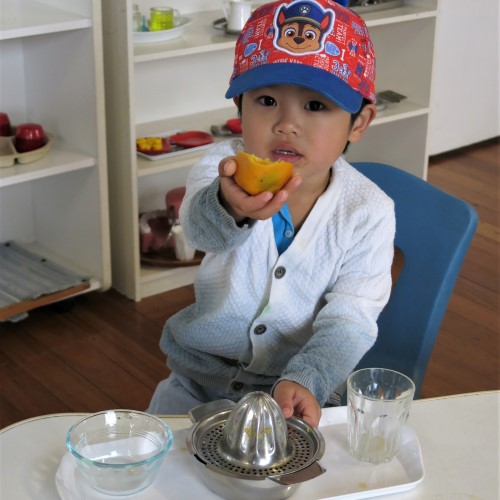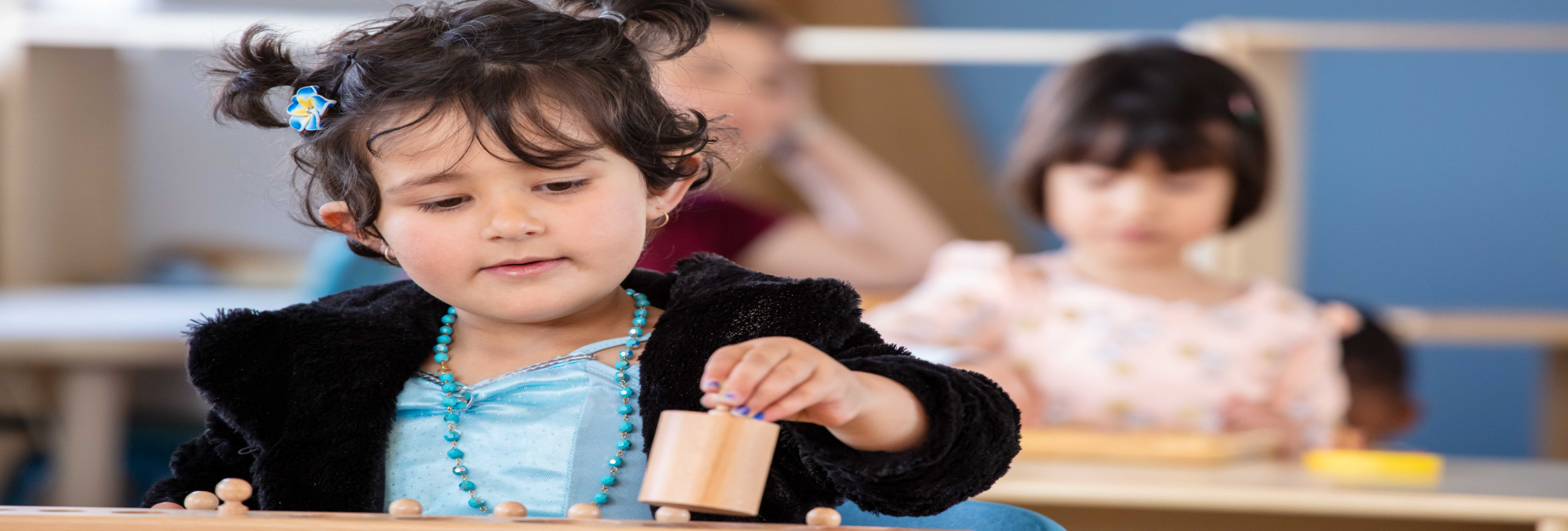
The Montessori Curriculum
Our Montessori approach is based around a 2-3hr work cycle and a multi-age group. Children are free to follow their own interests and choose from the range of Montessori activities and materials, while working at their own pace. This allows them to develop their skills and knowledge through practice and repetition.
Our flexible program allows children to work at their own level and to socialise with children of other ages and abilities, learning to cooperate with and respect each other. Multi-age groupings encourage the children to imitate others and to help each other learn, and this creates a truly collaborative environment.
There are 5 broad curriculum areas offered as part of a Montessori early childhood education program. Each of these fit within and are supported by the Early Years Learning Framework for Australia.
Practical Life
The Practical life activities encompass 4 main areas:
- Control of movement
- Care of person
- Care of environment
- Grace and courtesy/social relations
Practical Life materials and related exercises assist children to gain the necessary skills to enable them to be independent in caring for themselves and their environment. This is of great benefit to children, as they gain increased dignity and self-confidence, as they are more able to care for their own basic needs & then also assist others.
Practical Life activities aid concentration, co-ordination, movement and independence, while also developing skills in calculation, exactness, precision and judgment. This is one of the first areas introduced to new students within the Montessori environment, as it provides the cornerstone to their development and further learning to come.
Sensorial
The importance of the development and refinement of the senses cannot be underestimated. During the first years of life children absorb the basic patterns of their culture and impressions of the world around them. Education of the senses leads to education through the senses. It takes place in an environment of simplicity, beauty and order, offering children experiences that develop and refine their senses.
The sensorial materials represent abstract concepts in a concrete form. Materials that can be held and viewed offer children opportunities to make comparisons within the set, appreciating subtle differences within concepts such as dimension, form, colour, shape, smoothness or roughness, weight, temperature, flavour, smell, sound, and repetition. It is the qualities of materials that are important. Through a progression of self-correcting activities, each child is able to experience these concrete concepts.
The sensorial activities provide children with an opportunity to know something in the physical sense, before they are asked to comprehend it in an intellectual or abstract sense, providing an important foundation for their learning.
Cultural Curriculum
If we are to help children adapt to and cope with life, we must help them to understand the world around them. This is why cultural subjects and materials are so important as a part of the prepared environment in the Montessori classroom.
The world contains not only language and mathematics, but people, plants and animals, music, art, history, and geography. In order to understand, appreciate and adapt to their world, the Montessori approach believes that children must be given the seeds of knowledge in their early years.
As part of their learning environment, children are exposed to many cultural activities. These include a special Montessori style birthday celebration for children, celebration of cultural events and cultural diversity, exploration of the globe, as well as participation in a number of multicultural days throughout the year.
Language
This area focuses on communication and literacy skills to develop reading and writing.
Children in the Montessori classroom are given many opportunities and encouragement to express themselves creatively through spoken language. Gradually, with skills developed through work with the hands-on, carefully staged materials (such as matching cards and sandpaper letters), children are also given opportunities to express their ideas through written language. Children find it exciting to learn that others can communicate with them through written language.
Mathematics
The Montessori mathematics curriculum follows a 5-step sequence:
- Introduction of concrete materials
- Introduction of symbols
- Association of concrete with symbols
- Practice
- Self-assessment
Children in the Montessori classroom are provided with a range of materials to provide experiences with the basic concepts of mathematics. These form the basis for later mathematical understandings leading to abstraction (what you understand in your mind without having to see it physically).
The Montessori materials for mathematics have the following qualities:
- Self-Correcting – this allows the child to be involved in perceiving and correcting errors without having to be told by the teacher that it is either right or wrong.
- Design – the materials are simple, attractive, precise and inviting for children.
- Activity – the materials lend themselves to movement and repetition, providing opportunities for in-depth learning and extended concentration.
- Limited Quantities – this assists discipline in children as they may have to wait for a turn. It also helps to order and classify the environment and gives each child freedom of choice.

